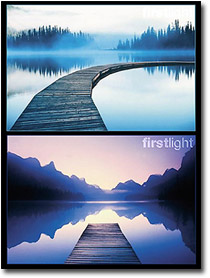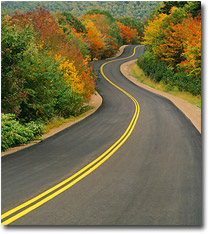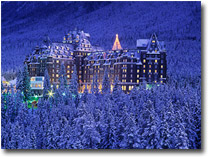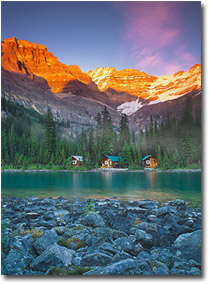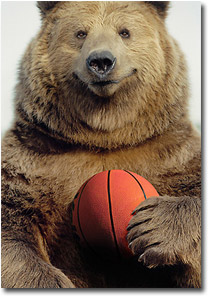 |
 |
||||
Think about it, we as nature photographers spend most of our time honing the technical aspects of our craft. Photography forums, magazines and books are chock full of information about all manners of esoteric photo technique. How often do we as photographers put story and mood as our primary objective while shooting? If we did, we would more likely succeed in selling our hard won imagery. I am as guilty as anyone. I really enjoy the craft that is photography. I pride myself in the mastery of technical skills. I love the problem-solving aspects of the art. I like gadgets: I am a gear-head. And I like telling others about my problem solving tricks and techniques (that’s why I write photo articles). When I first joined a stock agency, they commented on my technical excellence and mastery of light. Indeed this was the reason they signed me on (I knew how to take pictures). But then they spent the next many, many years trying to get me to shoot ‘subjects’ that would sell – subjects that inherently had ‘stories’ that would appeal to photo buyers. They partly succeeded; I started shooting industry, business, concepts, lifestyle, kids and still-life imagery. But even so, I still spent most of my energy thinking up techniques to help me shoot these subjects in an interesting way (at least to photographers) rather than concentrating on the stories behind the subjects (and appealing to photo buyers). Over the years a few of my photographs have been commercial “Top 40” hits. In hindsight, I now see the appeal of these photos and better understand the reason for their success. Most of these have been images of kids, doing everyday things. But there have been a number of ‘nature’ photographs that have done surprisingly well. These photos are by no means masterpieces (from a photography point of view) but boy, do they sell! Photo 1 - Dock Shots These two images have been around for awhile and were the first two images I ever had elements merged together in Photoshop (1995). I don’t have the images at home anymore and so got them from my agencies’ website to use here. The background in both is Maligne Lake in Jasper National Park. The docks came from other shots I had in my stock file. I had good success with dock shots in the past and I thought that by adding docks to these lake shots the images might do well. Boy, did I get a surprise! These two shots just keep selling and selling and in total have generated enough income to keep most photographers happy for several years. What’s the appeal to photo buyers? The scenes are generic (are not recognizable as a famous landmarks), and the compositions are simple and lend themselves to having text dropped into the image. As well, the images have lots of mood with the cool colors and strong back lighting, but most importantly the viewer feels as if they can walk into the photo and be part of scene. This feeling tweaks the viewer’s imagination and stirs memories and experiences of docks and lakes. The story is intrinsic within the viewer and thus is very personal and powerful. These images have an emotional ‘tug’ that advertisers can use to speak to us. Photo 2 - Road Shots I have had more success (commercially) with images depicting roads meandering through beautiful landscapes than I have had just shooting the landscapes by themselves. Roads can be used in travel brochures, for radar detector ads, for car insurance campaigns, for roadside assistance ads, for backgrounds to drop in photos of new car models, in short, for many uses. In our vehicle-centric society, images of highways can strike a resonant chord and personal memories with most viewers. Here again, we can picture ourselves in our vehicle cruising the winding road. The emotions stirred are personal. Whenever possible I will shoot roads, the monetary returns reward the risk of getting run over! Photo 3 - People in the Landscape The quickest way to insure a landscape image will sell is to include people in the composition. Including people tells a story (what is the person doing?), lets more viewers relate to the scene and imagine themselves as that person, or wanting to be with that person, and also adds color and scale to the composition. Photo 4 and 5 - Buildings in the Wilderness Another element which is sure to add sales appeal to an image is to include some sort of human-made structure into the scene. A lit tent, a cabin in the woods with Christmas lights, a lodge in the wilderness, an igloo on an ice floe; anything that lends a human presence, tells a story and lets the viewer want to participate in the scene. I have spent much time in the Canadian Rockies and have exposed hundreds of rolls of film, but my best wilderness shots with wonderful light have sold relatively little compared to images with a strong human presence. These two shots showing a lodge (Lake O’Hara) and a hotel (Banff Springs) in a wilderness setting just keep selling and selling. Photo 6 - Animals Showing Human Traits Wildlife shots that have animals doing something that tells a story will always sell better than wildlife portraits. Those behavior images that show the animal displaying an emotion that is ‘human-like’ have an even better chance of making good sales. So if you shoot wildlife, go for action, behavior and emotion. Recently my wife, Anita, and I did our first captive bear shoot. Rather than trying to pass off captive bears as ‘wild’ by shooting them in natural habitat enclosures we chose to show them for what they are – animal actors. These bears love to perform and have a wide range of expressions. We capitalized on their talents and photographed them doing their ‘tricks’. This ‘NBA’ bear is one of our favorites from the shoot. We have no idea if this will be a good seller or not, but it has all the makings of being one (story, and emotion). If you wish to sell your imagery, you might want to expand your repertoire from ‘straight’ documentary nature photography to ‘story-telling’ nature shooting. If you do, you’ll see the potential financial return from your images increasing as your images move from selling in the lower priced editorial markets (magazines, calendars, text books) to the higher paying advertising markets. To appeal to the higher end market, just remember this motto: “Story is Everything” DW-NPN 0343 About the author... Darwin Wiggett and his wife Anita Dammer are the proprietors of Natural Moments Photography. Anita has 17 years experience as staff photographer for the Glenbow Museum in Calgary and is currently the editor-in-chief of Photo Life magazine. Darwin has been shooting stock since 1990, and has two books published by Whitecap in Vancouver; Darwin Wiggett Photographs Canada and Seasons in the Rockies. Darwin's newest book, How to Photograph the Canadian Rockies will hit the shelves in the spring of 2005. Together they specialize in landscape, nature, animal, humor and kid photography and are represented by various stock agencies worldwide. Their primary stock agent is First Light in Toronto, Canada. You can view more of Darwin's work at www.darwinwiggett.com and on his online portfolio. Comments on NPN nature and wildlife photo marketing articles? Send them to the editor. | |||||
|
|
|||||
